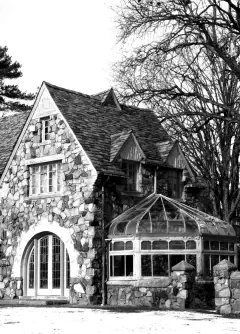Following East Village Magazine contributing writer Jan Worth-Nelson’s review of Phil’s Siren Song by local author Tim Lane, writer Bob Campbell shares a personal perspective on the novel set in 1980s Flint.
By Bob Campbell
The wonderful thing about reading fiction, in this case literary realism, is the door it opens to a different world – one that allows you to immerse yourself in the lives of the story’s characters. The experience is an opportunity to learn something new.
Flint is often framed as a “Black city,” and usually derisively so. It strikes as a way to subtly, and not-so-subtly, blame the myriad of urban problems on the “incompetence of Black governing officials,” “the failings” of the expanding Black population, or some combination of both, while avoiding a genuine appreciation of the significant roles that systemic racism, decades of disinvestment by key institutions, and the flight of the economic base played in the city’s downfall.
However, Phil’s Siren Song, the second novel by Flint-native Tim Lane, offers a fascinating and entertaining peek inside the world of some of Flint’s non-Black residents, specifically the city’s white working-class rooted on the Eastside.
If the city’s Northside is thought to be essentially Black, the Eastside is equally and unapologetically white.
In the period in which the novel is set, the late 1980s, Flint was still predominantly white by a few percentage points. After a young and up-and-coming Matt Collier defeated the middle-aged incumbent Mayor James Sharp in 1987, there was a sense by some that the white majority had regained control of the city’s fortunes and future. For that brief period, the mood of “happy days are here again” was resurgent. Meanwhile, doormen had been posted at the entrances of some downtown bars to carefully manage who might or might not be allowed inside. However, as the decade wound down, the city’s descent continued largely unabated.
Lane’s Flint focuses on the grittier aspects of a city ravaged by economic decline, rising crime, and a burgeoning punk scene. Against this backdrop, protagonist Phil McCormick and his crew wrestle with familiar twentysomething dilemmas: dead-end jobs, college life angst, questionable life choices, and the allure of escaping what increasingly feels like a dead-end town.
Lane also takes the reader through a number of familiar haunts, among them: the decrepit Capitol Theatre, Windmill Place, Water Street Pavilion, Torch Bar, Rusty Nail, UM-Flint, GMI (now Kettering University), and Buick. The factories of AC Rochester (formerly AC Spark Plug) and nearby junkyard loom large in the background of the novel’s Eastside neighborhood, as well as a number of other landmarks. Meanwhile, the fictional club El Oasis and diner Thoma’s — places where Phil and friends spend a good deal of time — feel very much like The Copa and Angelo’s, respectively.
The author and I are contemporaries (though I am a few years older), and the urban terrain he dishes up is very familiar. Having grown up on the Southside and worked as a skilled tradesman at AC while living in the Glendale Hills neighborhood at the time, I too came of age in that period and re-lived it by reading Phil’s Siren Song.
The Torch was a favorite spot where a close friend and I downed burgers, fries, and Manhattans, often late into the night. We also enjoyed a bit of people-watching. The camaraderie of the novel’s main characters reminded me of a small menagerie of young white people who used to hang out there too.
The crew of five or six — probably suburban-types or city-raised Catholic school kids, we figured — always struck us as a rather amusing (and sometimes annoying) lot with their performatively carefree demeanor and antics. There was a shapely pale goth girl with jet black hair, black eyeliner, and black clothing. Then there was “the mad hatter,” our term for the guy who wore something like a shallow top hat. He was the jester juxtaposed to the goth girl’s cool. As a group, we referred to them as the “Groovie Goolies,” the band of monsters from the early 1970s cartoon “Sabrina the Teenage Witch.”
Looking back, I can appreciate the idea that perhaps the aspirations of the “Groovie Goolies” weren’t all that different from mine. Of course, that’s in part due to the maturity of my middle-aged years.
But Phil’s Siren Song spoke to me as well, delivering a glimpse of how the other half lived in Flint during the 80s. And in doing so, it suggests in some ways that life for twentysomethings in that part of town wasn’t too far removed from the rest of us strivers living elsewhere in the city at that time.
Bob Campbell was raised on the Southside. His debut novel, Motown Man, was published in November 2020. Bob was the 2022-2023 Writer In Residence (WIR) for the Buckham Fine Arts Project. His collection of WIR essays are published in Observations, Volume 3.

